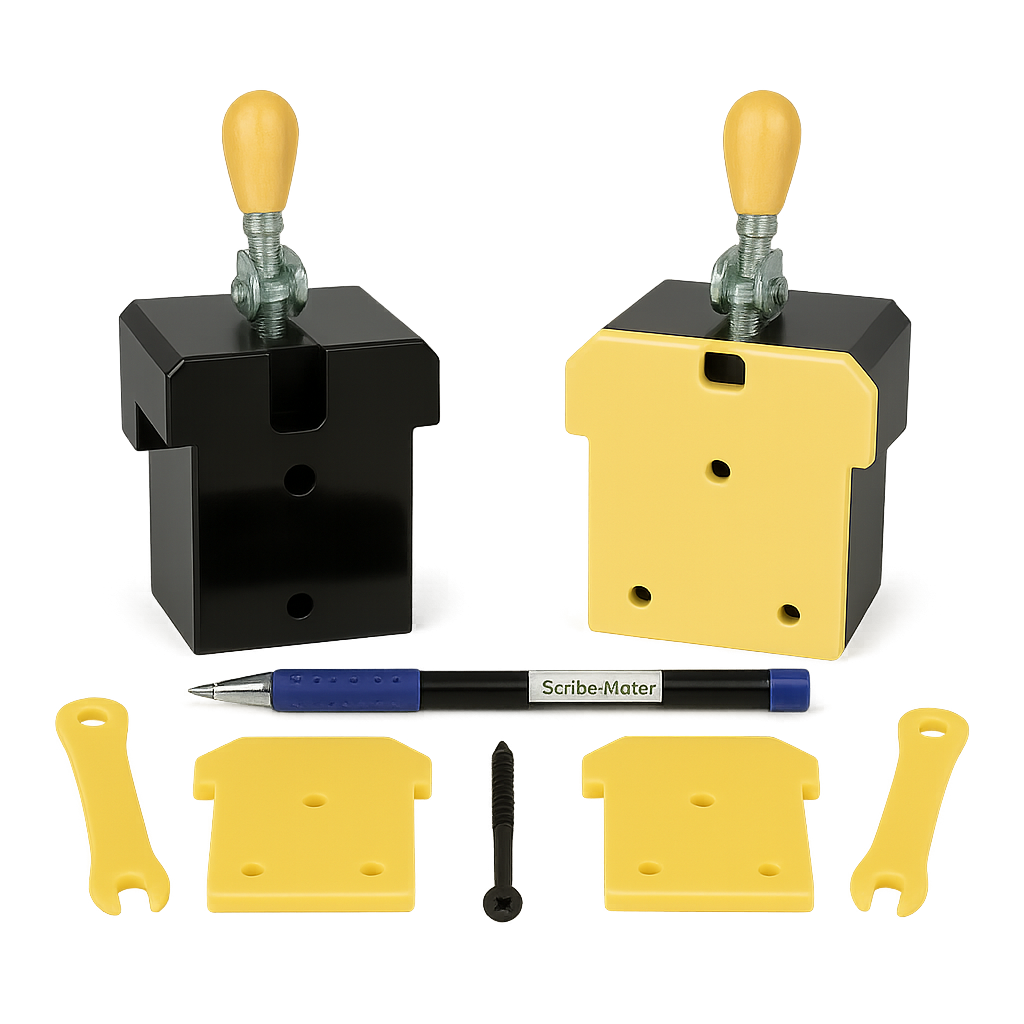Buy your weekday smoothies and get your weekend ones for free. (7 for the price of 5!)

Scribing a cabinet panel so it sits flush against uneven walls or surfaces is one of those jobs that separates a tidy finish from a frustrating one. Traditionally, it can be fiddly, time-consuming, and easy to get wrong. But with the Scribe-Mate tool and a few clear techniques, achieving a professional scribe line on the first cut becomes a straightforward process.
Below, we’ll walk through the main methods and situations you’ll encounter—whether you’re dealing with pre-drilled hinge holes, corner placements, long plinths, or stepped cabinet panels.
1. Scribing Using Pre-Drilled Hinge Holes
Most cabinets arrive with standard hinge plate holes—commonly 5 mm or 3 mm in diameter. Scribe-Mate is designed to work seamlessly with both:
-
Insert the location pins into the correct holes (directly for 5 mm; with shims for 3 mm).
-
Fix the jig gently using the supplied bugle-head screws—firm enough to hold, but without overtightening.
-
Position your fillet so it sits snugly against the jig’s clean edge and secure with a clamp.
-
Glide the scribing tool smoothly along the surface and cut precisely to the marked line.
The result is a fillet that fits tightly with minimal need for caulking—a clean, professional outcome every time.
2. What to Do When There Are No Pre-Drilled Holes
Not every cabinet is supplied with hinge holes, but there are two reliable workarounds:
Option A – Using the Cabinet Corner
-
Place a “shoulder” of the jig into the cabinet’s corner.
-
Secure it, clamp the fillet as usual, and scribe along the edge.
Option B – Using a Location Plate
-
Fix a location plate opposite the jig’s pins.
-
Secure the jig block in place, clamp the fillet, and mark your line.
-
Remember to remove the plate before attaching the fillet—otherwise, you’ll scribe 3 mm too narrow.
3. Handling Plinths and Top Fillets
For plinths and top panels where corners are your reference points:
-
Insert the jig shoulder into the inside corner (top or bottom).
-
Place a second jig in the opposite corner and clamp your fillet.
-
For longer runs, introduce a third jig with a location plate to maintain stability.
This setup keeps your scribe line consistent across extended lengths, avoiding drift or misalignment.
4. Overcoming Cabinet Panel Steps
Uneven panel depths are a common challenge, especially when cabinets sit slightly out of line. To handle this:
-
Measure the thickness of the step.
-
Insert equal shims between the jig and the panel on both sides.
-
Mark and cut your line as normal.
This ensures the fillet remains uniform, preventing the uneven cuts that can result from stepped cabinet faces.
5. Important Finishing Notes
-
The screw holes used to secure the jig double as fixing points for the fillets themselves.
-
In most cases, these screws will be hidden neatly under cabinet hinges.
-
Where they remain visible, simply fit the supplied screw caps for a polished, seamless look.
The Professional Finish—Made Simple
By combining Scribe-Mate’s clever design with the right method for the job at hand, you can cut down on wasted time, reduce errors, and deliver a flawless scribe line every time. Whether you’re fitting kitchens, wardrobes, or custom cabinetry, these techniques give you precision and consistency without the usual frustration.
